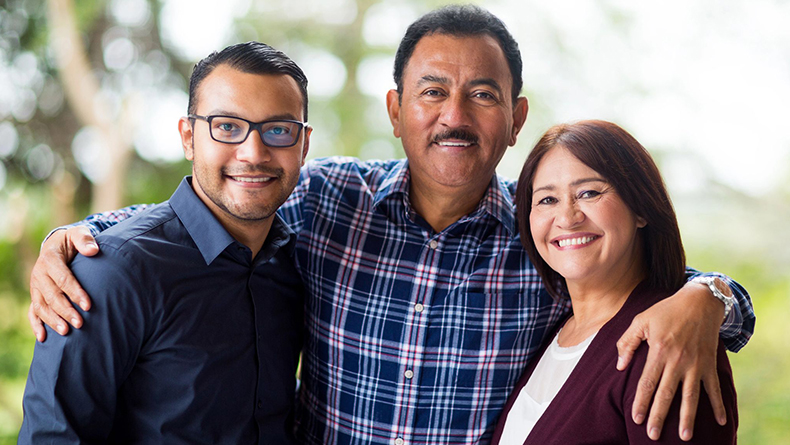AARP Hearing Center
The Parents are Alright… Or are They? Exploring Well-Being of Parents Living with Adult Children
By Julie Miller, Beth Carter, Kennan Cepa, June 6, 2024 10:15 AM

The topic of parenting adult children is gaining increasing public attention, and for good reason.
While many aspects of parenting adult children may be timeless, others are more time-bound. One such example relates to co-residence. There are many ways to think about drivers and implications of extended co-residence between parents and adult children – and now more than ever, important reasons why we should.
Co-residence between parents and adult children: Recent trends vs. cultural norms
Co-residence between parents and their adult children is happening more frequently today than it has in generations. In 2020, a 52% majority of adults ages 18-29 lived with their parents, the highest rate of co-residence in the United States to date since 1940, when co-residence reached 48%[i].
Multiple drivers of the trend may be at play. One such driver: the recent pandemic. An AARP research article noted, “People have always lived in multigenerational homes, but the drivers have changed with COVID-19 — as have the perceived benefits and challenges.” Another factor may be one of economics, such as in the form of skyrocketing housing costs.
After years of socioeconomic and demographic shifts (described in a recently released brief, “Parenting Young Adults in the US,” written by Economist Impact and supported by AARP), the prevailing narrative of moving away from home as part of adulthood has shifted. There are rich cultural traditions in which it is the norm and not the exception for parents and their adult children to live together. However, in the U.S. context co-residence historically has largely been framed as adult children being financially dependent on parents, rather than as financial interdependence between aging parents and their adult children. This framing can be attributed to multiple factors, including enduring cultural expectations of “leaving the nest” as a milestone along the way to reaching adulthood and skyrocketing rent and housing costs. Society is overdue for narratives that hold the complexity of multiple possibilities (competing as they may seem) in equal light; and with America’s rapidly aging population, embracing multigenerational households could help enable even more families to provide and receive support through various transitions and turning points in life.
Well-being of parents with and without adult children living at home
Building on efforts to better understand the shifting and emerging dynamics among parents and their adult children, AARP recently collaborated with the Financial Health Network to learn more about co-residence with adult children and its possible effects on parents.
Every year, as part of its Financial Health Pulse® research initiative, the Financial Health Network conducts its Financial Health Pulse survey, a nationally representative survey fielded through the University of Southern California’s Understanding America Study online panel, focused on financial health in America.
Of the Pulse survey respondents ages 40 and over, 15% reported living with an adult child over 18 who is not enrolled in school. Parents’ top reasons cited for co-residence with an adult child were to assist the child financially (61%), preferring to live with others (28%), and to receive financial assistance (14%); nearly one-quarter cited “other” reasons.
In terms of financial well-being, 57% of Pulse respondents 40 and older co-residing with their adult children report “living comfortably” or “doing okay” financially, compared to 70% of those with no adult children living at home (figure 1).
Figure 1. Financial wellbeing among adults 40+ with and without adult children living at home, N=6,004

Source: AARP Public Policy Institute analysis of 2023 Pulse data
On questions of physical and mental health, adults with adult children living at home were less likely to report having excellent or very good physical health (32% vs. 40%) compared with those living with adult children; adults with adult children living at home were also less likely to report having excellent or very good mental health (48% vs. 56%) (figure 2).
Key takeaway: the need for more exploration
It’s tempting to read into these findings a causal link between parents living with adult children and lower reported rates of financial security and health. But determining causal effects is not possible from a cross-sectional study, where many other factors could be at work. Indeed, the Economist Impact brief notes that contributing factors to co-residence are often layered, and that experiences vary from household to household. The brief describes how “boomerang” transitions back to the parental home have been associated with both positive and negative effects on parents’ quality of life and well-being.
This research points to the need for further study of the issues at hand. There has been a major shift toward co-residence with adult children in America, and that raises big questions, including but not limited to: How can we enhance well-being for parents and their adult children living together? And what will it take to realize the ultimate possibilities multigenerational living presents?
The ability to answer such questions is important. Maximizing the financial and health benefits of multigenerational living for parents and adult children as they age has implications across many societal issues including work, caregiving, and education.
[1] Economist Impact: https://impact.economist.com/perspectives/health/parenting-young-adults-us


































































